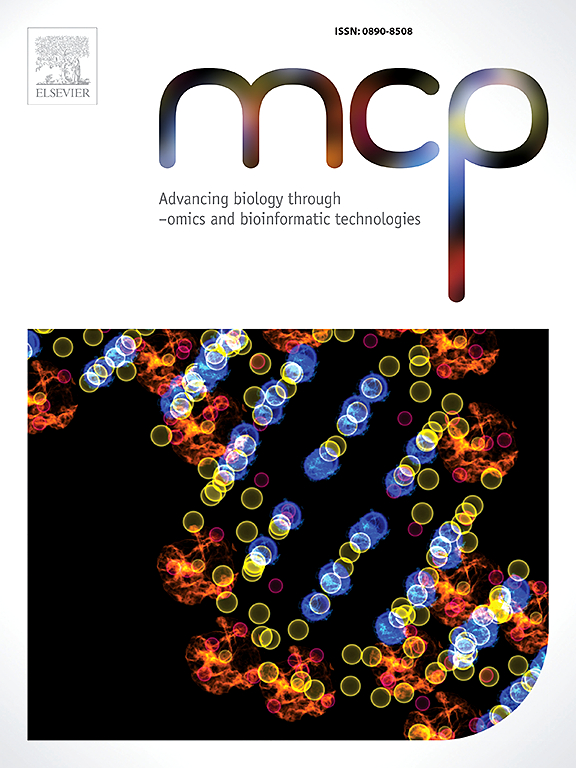Assessment of cancer-associated fibroblast signature genes in ovarian cancer patients: impact on immunity, drug resistance, and prognosis
IF 3
3区 生物学
Q3 BIOCHEMICAL RESEARCH METHODS
引用次数: 0
Abstract
Ovarian cancer (OC) is women's third most common gynecologic tumor and is highly lethal. Cancer-associated fibroblasts (CAFs) are associated with cancer at all stages of disease progression and are involved in biological processes, including inflammatory processes, tumor development occurrence, and immune rejection. This study aimed to construct prognosis-related CAFs regulatory factors to predict the survival of OC patients. Datasets of OC patients with complete clinical information were collected from the Gene Expression Omnibus (GEO) and the Cancer Genome Atlas (TCGA) databases. First, we identified potential regulator factors of CAFs in OC based on the xCell algorithm and weighted gene co-expression analysis (WGCNA). Further screening using one-way cox regression analysis and LASSO regression models yielded 22 prognosis-related CAFs regulatory factors, using which a model was constructed. Subsequently, the diagnostic effectiveness of the model was assessed using receiver operating characteristic (ROC) curves, and the validity of the CAFs regulatory factors survival model was verified in three additional independent datasets and single cell data. Meanwhile, experimental validation was conducted using immunohistochemistry and Western blot. The results showed that GAS1 (Growth arrest specific 1) exhibited a higher expression pattern in fibroblasts from ovarian cancer patients.
The assessment of resistance and immune checkpoint differences across various risk score groups indicates that the CAFs regulatory factor survival model is practical for guiding systemic treatment. In summary, this study establishes a prognostic model composed of 22 CAFs regulatory factors to predict the prognosis of ovarian cancer (OC), providing new perspectives for the clinical treatment of OC.
卵巢癌患者癌症相关成纤维细胞特征基因的评估:对免疫、耐药性和预后的影响
卵巢癌(OC)是女性第三大常见妇科肿瘤,具有高致死率。癌症相关成纤维细胞(CAFs)在疾病进展的所有阶段都与癌症相关,并参与生物过程,包括炎症过程、肿瘤发生和免疫排斥。本研究旨在构建与预后相关的cas调节因子来预测OC患者的生存。具有完整临床信息的OC患者数据集来自基因表达Omnibus (GEO)和癌症基因组图谱(TCGA)数据库。首先,我们基于xCell算法和加权基因共表达分析(weighted gene co-expression analysis, WGCNA)确定了OC中cas的潜在调控因子。进一步使用单向cox回归分析和LASSO回归模型筛选得到22个与预后相关的cas调节因子,并以此构建模型。随后,使用受试者工作特征(ROC)曲线评估该模型的诊断有效性,并在另外三个独立数据集和单细胞数据中验证CAFs调节因子生存模型的有效性。同时采用免疫组织化学和Western blot方法进行实验验证。结果显示,GAS1 (Growth arrest specific 1)在卵巢癌患者的成纤维细胞中有较高的表达模式。不同风险评分组的耐药性和免疫检查点差异评估表明,CAFs调节因子生存模型可用于指导全身治疗。综上所述,本研究建立了由22个cas调节因子组成的预测卵巢癌(OC)预后的预后模型,为卵巢癌的临床治疗提供了新的视角。
本文章由计算机程序翻译,如有差异,请以英文原文为准。
求助全文
约1分钟内获得全文
求助全文
来源期刊

Molecular and Cellular Probes
生物-生化研究方法
CiteScore
6.80
自引率
0.00%
发文量
52
审稿时长
16 days
期刊介绍:
MCP - Advancing biology through–omics and bioinformatic technologies wants to capture outcomes from the current revolution in molecular technologies and sciences. The journal has broadened its scope and embraces any high quality research papers, reviews and opinions in areas including, but not limited to, molecular biology, cell biology, biochemistry, immunology, physiology, epidemiology, ecology, virology, microbiology, parasitology, genetics, evolutionary biology, genomics (including metagenomics), bioinformatics, proteomics, metabolomics, glycomics, and lipidomics. Submissions with a technology-driven focus on understanding normal biological or disease processes as well as conceptual advances and paradigm shifts are particularly encouraged. The Editors welcome fundamental or applied research areas; pre-submission enquiries about advanced draft manuscripts are welcomed. Top quality research and manuscripts will be fast-tracked.
 求助内容:
求助内容: 应助结果提醒方式:
应助结果提醒方式:


